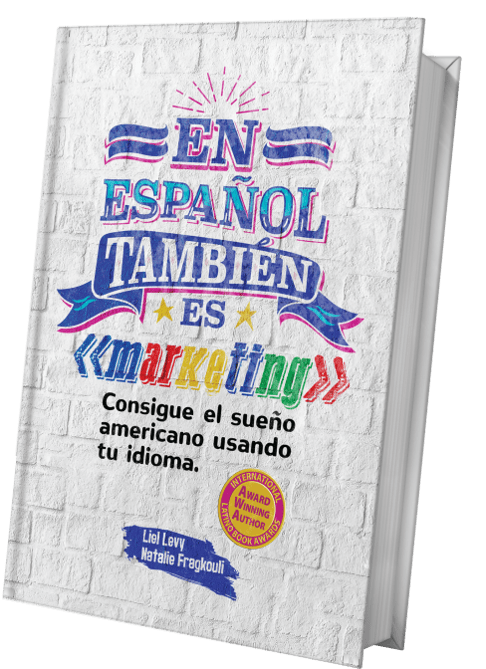You can measure the success of digital marketing for law firms, whether it’s PPC or SEO, in various ways. It can be website traffic, unique visitors, bounce rate, CPC (Cost Per Click), or CPA (Cost Per Acquisition). However, in the end, it all boils down to conversions; in other words, signed cases and new clients.
I you are familiar with our blog and follow our articles, you’ll be familiar with the fact that we’re trying to give our readers a 360-degree view of legal digital marketing and the many different options for success. For example, we’ve talked about the opportunities your law firm can have with low bono marketing, how you can increase your caseload even on a budget, and the power of content repurposing. All these cover both SEO and PPC and can be applied in Spanish and English. Today we are coming up with even more added value by introducing the concept of CRO (Conversion Rate Optimization) and how you can combine it with your law firm’s digital marketing activities, creating a killer strategy.
Let’s start with the basics, as some readers might not be familiar with the meaning. CRO is the fundamental element that puts together all your law firm’s marketing initiatives, whether it’s inbound, outbound, SEO, or PPC. It’s a coordinated effort that allows you to increase your law firm’s conversion rate. How do you achieve that? By creating the desired calls to action and putting them in prominent places; in other words, building the right environment for conversion. The CTA will be your choice and depends on several factors (among them demographics, campaign type, device, etc.), but it could be anything from a phone call to a live chat session to a webform submission.
Fact: Conversion rate equals the number of conversions divided by the total number of visitors, multiplied by 100.
Now that we’ve given a general overview of CRO as a concept, it’s time to move into looking at how it can help you maximize your ROI by exploring some of the most valuable actionable tips and insights. We’ll split into SEO & PPC, but some of them might be slightly overlapping.
- SEO & CRO for Law Firms
Search engine optimization is what brings organic traffic to your website. It’s one of the most competitive marketing fields for law firms out there. If you’re determined to succeed, you can’t leave it to chance. If you don’t optimize your CRO, you drastically reduce your chances of success. Let’s start looking into our tips:
- Build the foundations for success with law firm SEO. What do we mean by that? Invest in your website; that’s what will be with you in the long run, and it has to be functional, offer accessibility, and have a great UX (user experience). Additionally, it has to have fast load times and be well-structured, following the best taxonomy practices. That’s the first step, and you can never ignore it if you want to have chances of ranking high on the first page.
- Understand your demographics and build your website, SEO, and conversion methods based on them. If, for example, US Hispanics are vital for your law firm, you shouldn’t just translate your website but transcreate it instead. That way, you’ll create the proper bonds with the Latinx community. Additionally, you should bring the right calls to action to the front. By monitoring and tracking your CTAs, you’ll discover what works best for each demographic group and make that the first option for them.
- Go mobile-first. This is crucial. Not mobile-optimized or friendly. Smartphones (and other mobile devices) are continually gaining momentum. While having to work on your website from scratch might sound like a significant investment in terms of time and resources, it will pay off. It’s unlikely you’ll convert mobile traffic on a non-mobile website. If you consider that mobile visitors are more likely to convert, then not having a mobile-first site means you might miss out on future potential clients.
- Create your content strategically. If you’re familiar with SEO, you must know that experts consider content to be king. But not any kind of content. Yes, the baseline is unique and original content. But is this enough? If you don’t keep conversions and CRO in mind, you minimize your chances of success. Work on articles, videos, images, and every other kind of content with intent as your priority. Are you, for example, an Immigration attorney? Apart from all the standard content that any law firm website needs to have, build interactive FAQs and Q&As, write blogs about the most current news, and bring your perspective to the forefront. Finally, combine all these with prominent (and not invasive) calls to action to help the visitor/searcher get in touch with you without searching for the contact details on another page.
- Avoid intrusive elements on your website. If your live chat pops up and takes three-quarters of the page or has a “call us now” banner that doesn’t allow further navigation, consider changing it. Google holds UX in very high regard, and all these show signs of improper execution. You risk high bounce rates and potentially even some penalties from the search engine. Ultimately, what counts is that the visitors will not get what they searched for, they won’t see your reply to the query, and they will go to the following suitable result. Again, create prominent CTAs that help with conversions without sacrificing UX.
Bonus tip: A/B test everything you do. Split testing can be invaluable for your long-term success with SEO & CRO. Don’t fear trial and error.
- PPC & CRO for Law Firms
Whether through Google Ads or social media ads, Pay Per Click can be one of the marketing activities that yields the highest ROI for you. Among all the optimizations that we’ve covered over time, certain aspects contribute to CRO and will help your law firm obtain better results.
- Use landing pages for your PPC campaigns and not generic website pages. We’ve devoted an entire article explaining why you should send your PPC traffic to landing pages. Summing it up, it allows you to get the visitors’ full attention without distractions (i.e. other content). It gives optimized web page speed. It can be set up in a way that answers directly to the query, maximizing the chances for conversion, and as a consequence, you get a step closer to your next signed client.
- Add the most relevant CTAs, in the right spots, under the proper context. Similar to your SEO-CTAs, here you should consider your law firm’s buyer persona, demographics, and historical data, allowing you to identify what to use under each condition. If, for example, you are running Google Ads in Spanish for MVA cases, and you’ve noticed a tendency for mobile searchers that tend to call you, then your first CTA should be a call button. The same would apply to other buyer personas, demographics, or age groups that may prefer web forms or live chat.
- Don’t stop optimizing and testing. That’s the final component of your success. Monitor, track, test, and improve. Don’t change what’s working, but keep your eyes open in this ever-changing, ever-evolving environment.
Bonus Tip: Conversions doesn’t guarantee revenue, but they’re the first step towards it, and if used correctly, they can be the decisive factor for your Law Firm’s sustainable growth.
Time for our takeaways:
- CRO builds the foundation for a long-term, sustainable growth strategy.
- Digital marketing (especially SEO) and CRO go hand in hand. If you don’t follow the best practices, you can put your investment at risk.
- UX, website speed, strategic content creation, CTA optimization and tracking, and continuous testing/optimization are among the keys to success.



